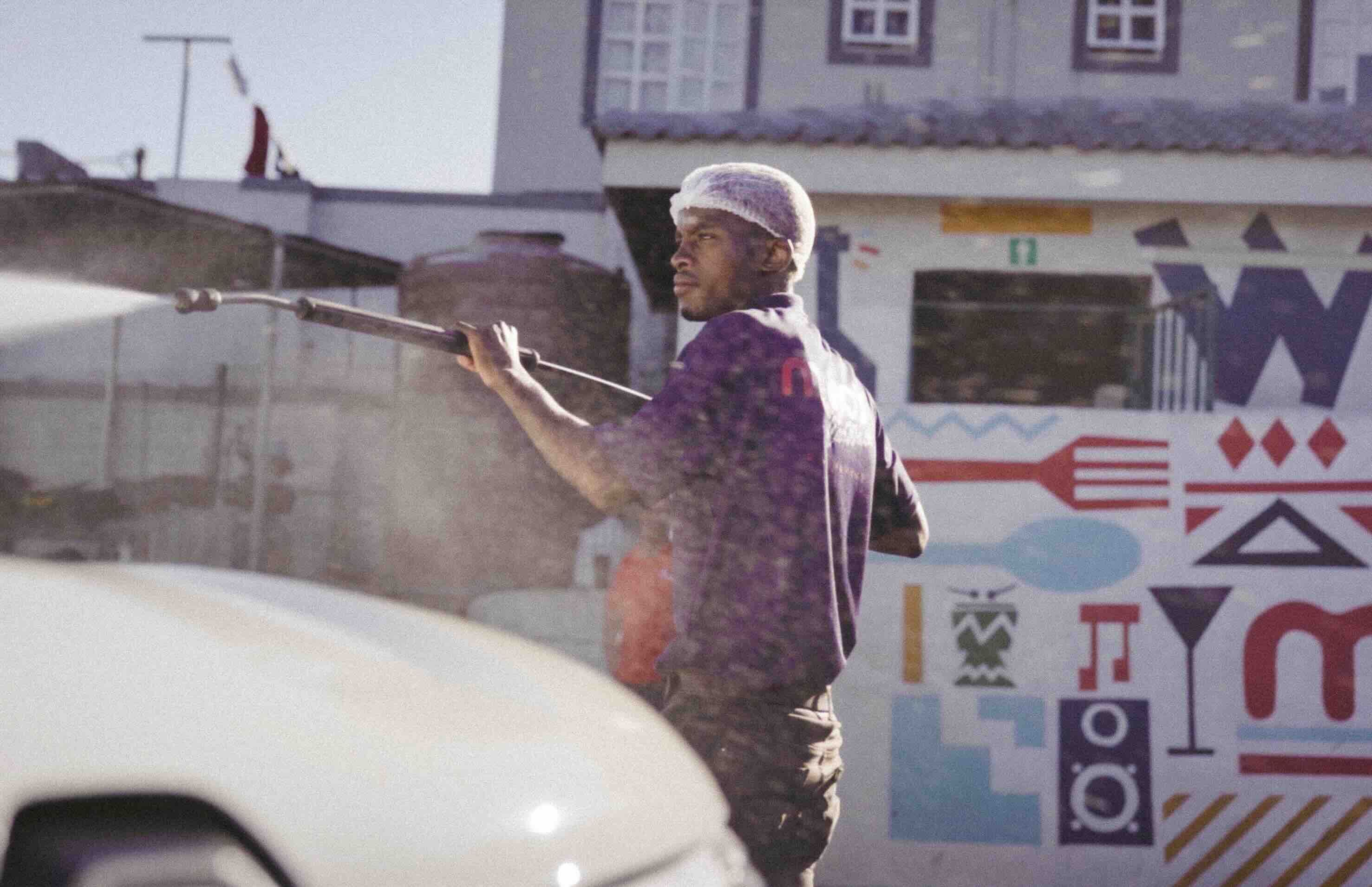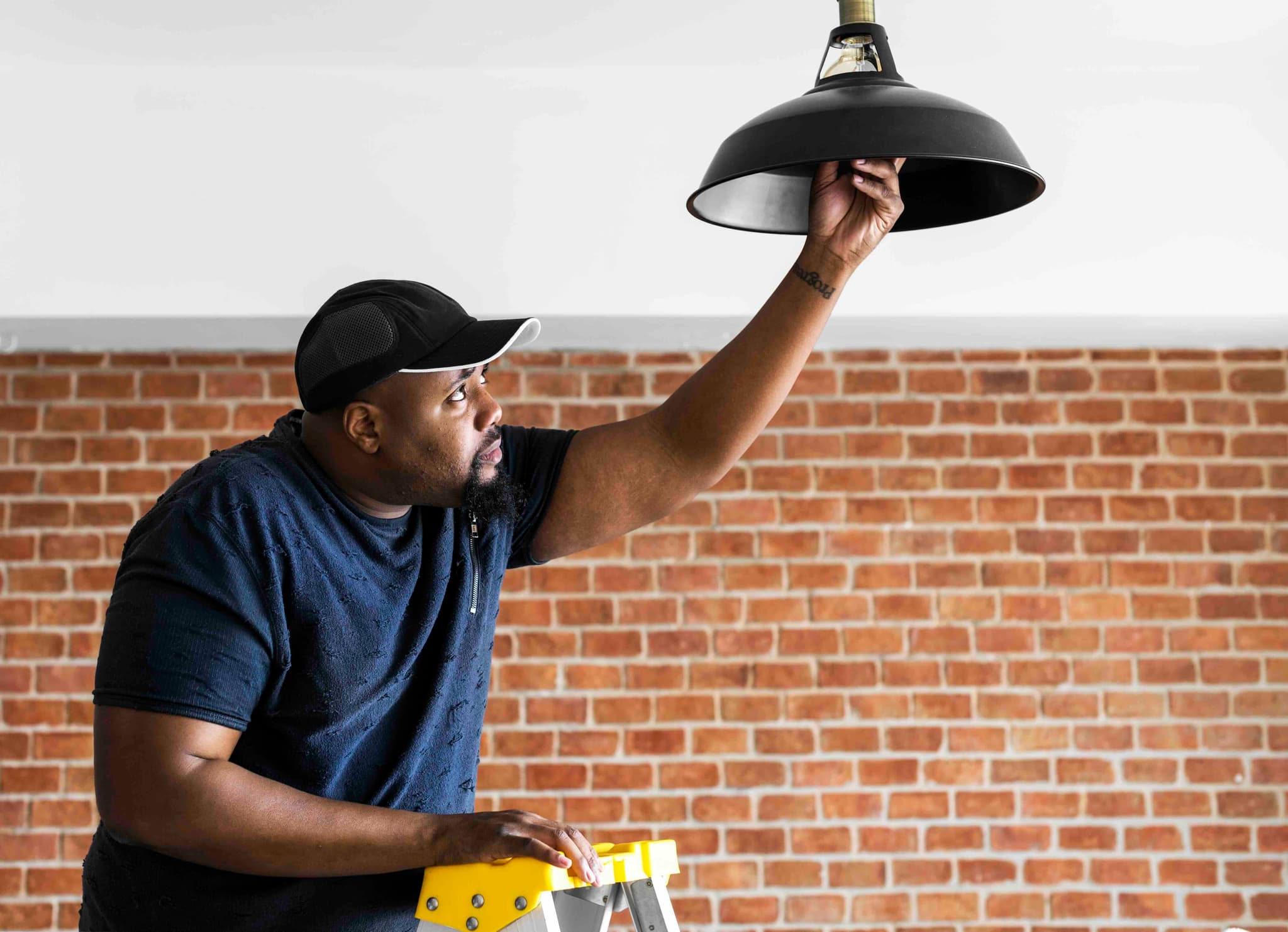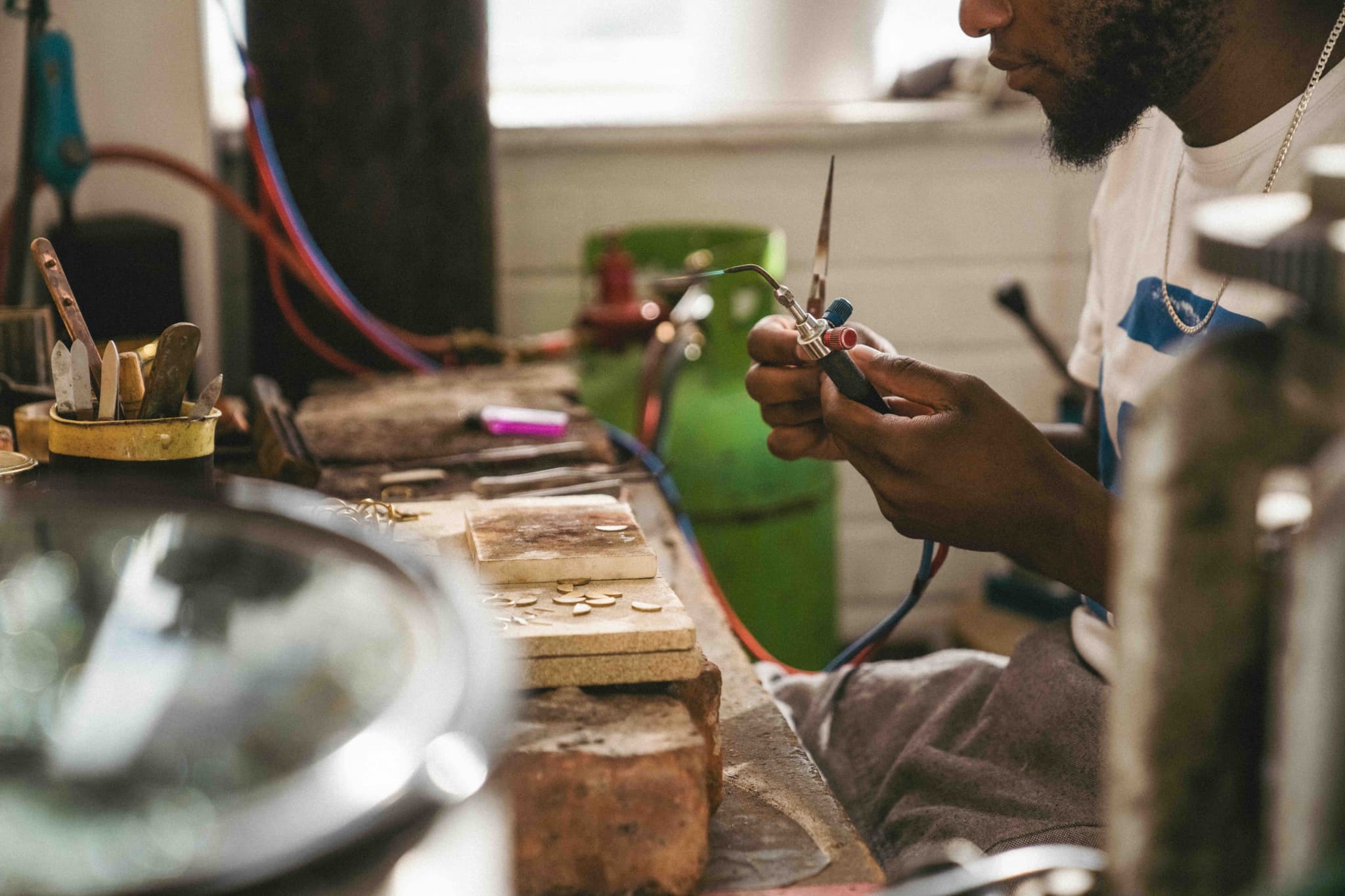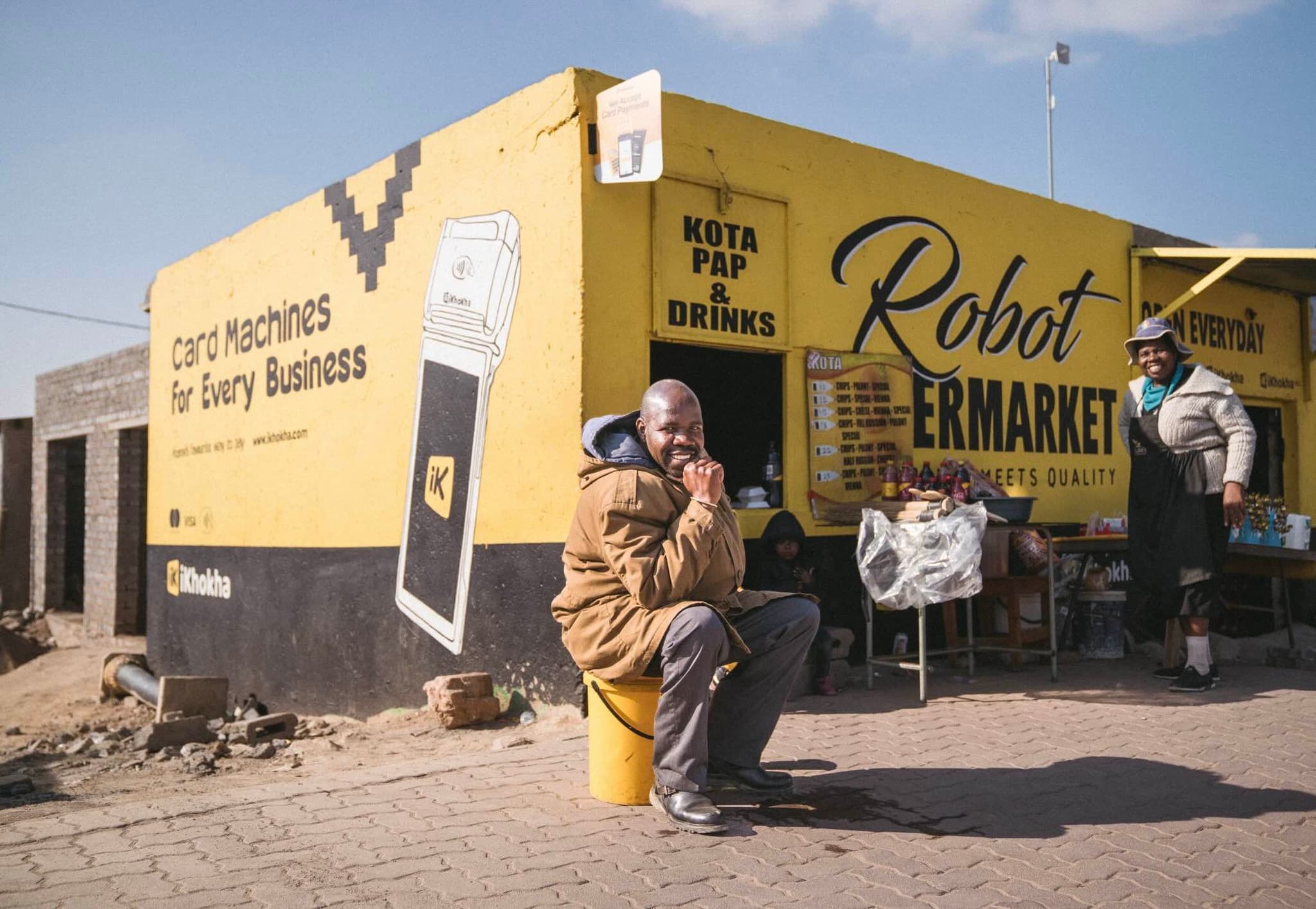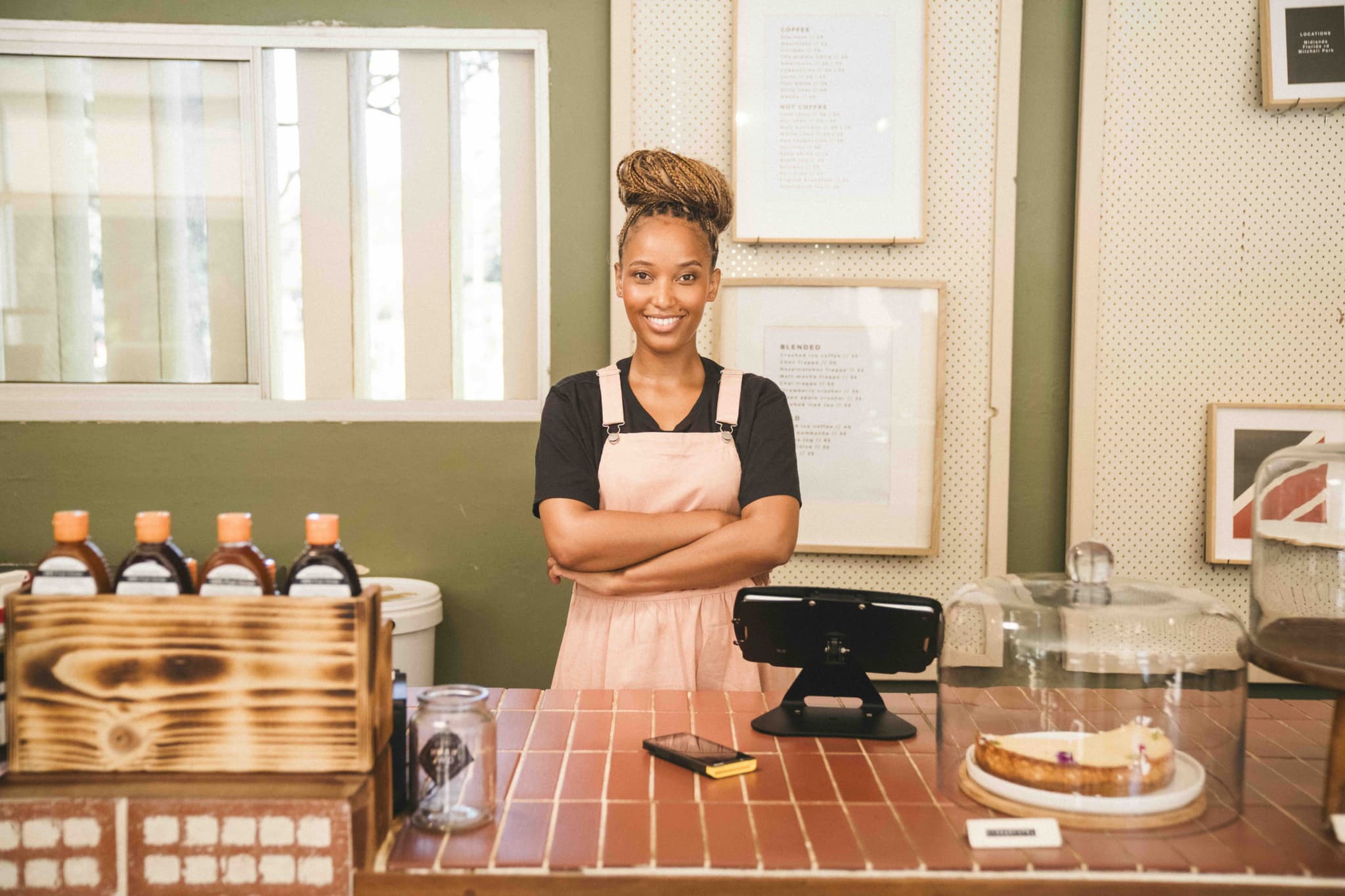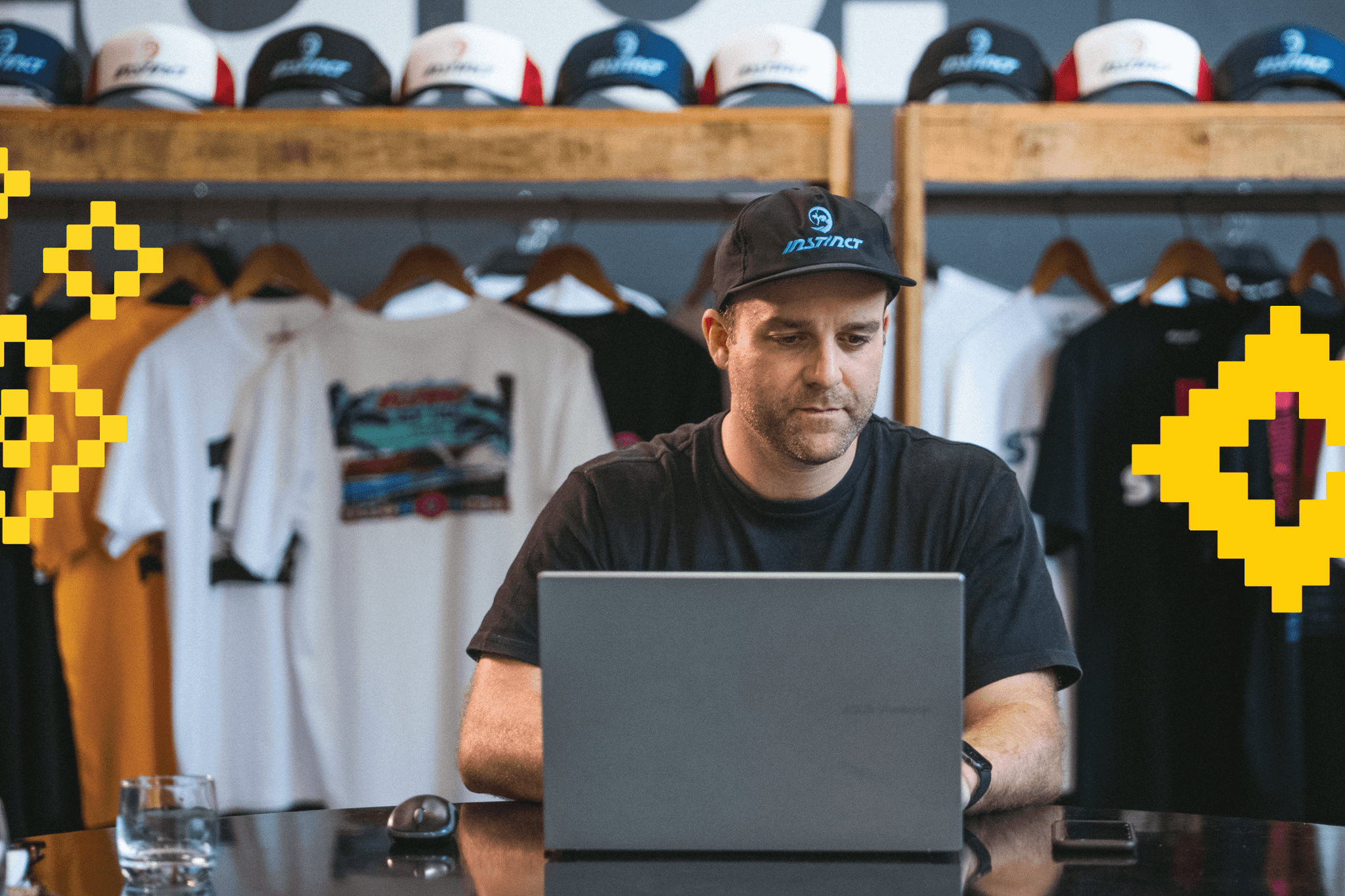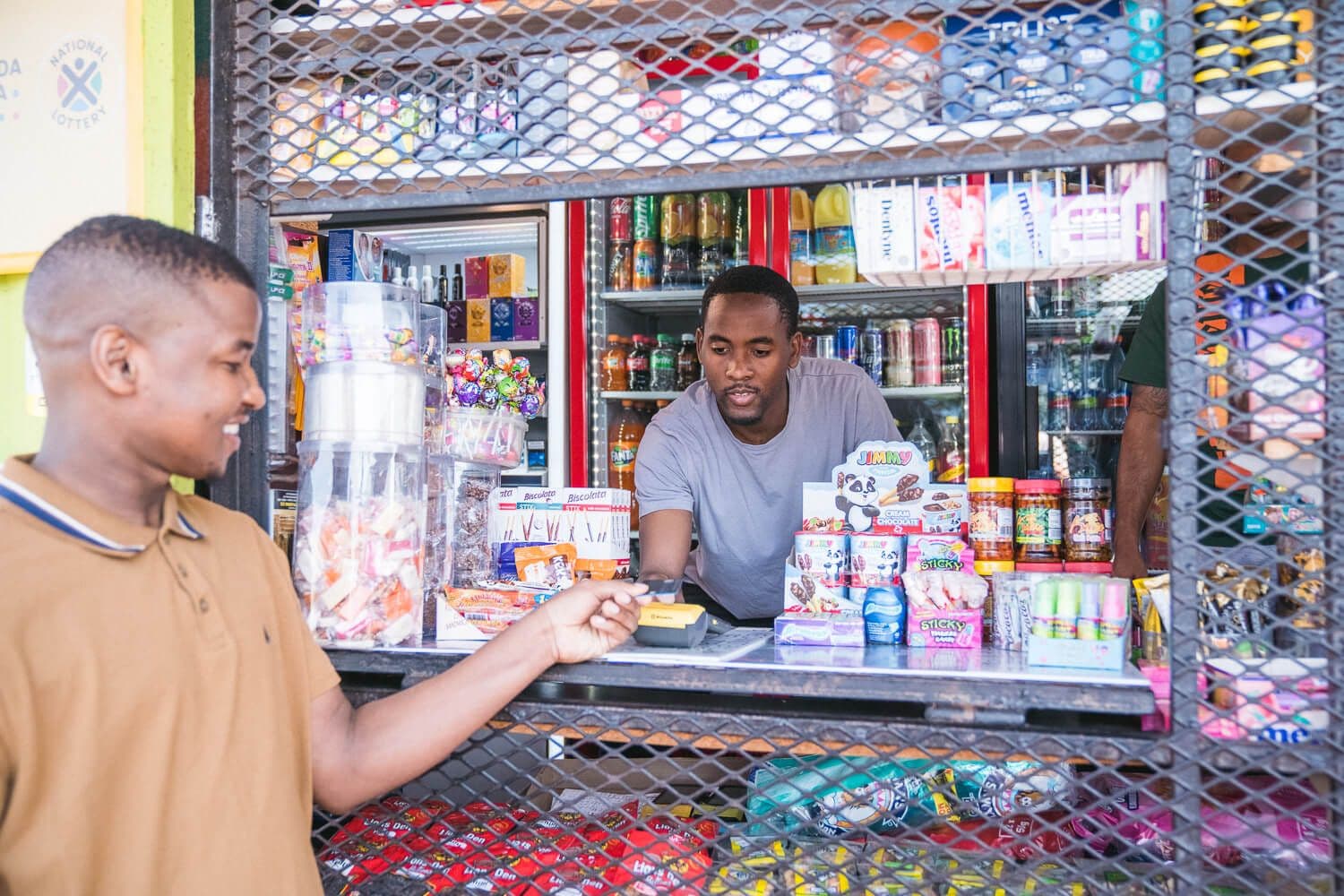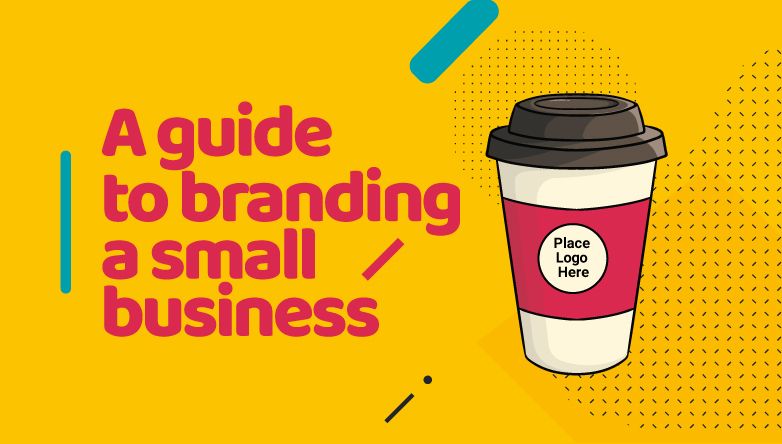
A Guide to Branding a Small Business
Give your small business the zing it needs to stand out in the market. How? Here’s a guide to branding a small business to make an everlasting impression.
BY Yolisa Motha
Table of Contents
- Introduction
- Brands make the world go round
- To brand or not to brand? That is the question
- What is the purpose of branding a business?
- The importance and benefits of branding a small business
- Builds brand recognition
- Builds brand trust
- There’s power in branding: the story of the miscellaneous coffee beans
- Builds brand customer loyalty
- How (and what to do) to brand a small business
- 1. Understand who your audience is
- 2. Establish your brand strategy
- 3. Create your brand identity
- The logo
- Colour palette
- Tips for branding a small business:
- Be genuine to your brand
- Be consistent
- Be simple
- Be open to suggestions
- Get it out to the world
- Ready to break through the clutter and conquer
There isn’t a place you go where you don’t see branding. Brands are everywhere. To prove this point, here’s a task.
Have a good look at yourself. The watch on your wrist, that’s a brand. The shoes on your feet, that’s a brand, too. The coffee you drank or the tea you sipped this morning. That was a brand. How about the device you’re using to read this article? You got it – it’s a brand!
In this article, we’ll take a deep dive into all you need to know in branding a small business.
Brands make the world go round
You’re at the stage where you’ve got the business idea, you’re confident about your business name, and hopefully, you have that business registered. But your business is missing the personality it needs to create customer relationships rooted in trust and loyalty.
Right? You can’t have a successful business without customers who believe in what you have to offer.
In the world of business, you may have heard of what we’re getting into, “branding your business”. And while it might sound daunting and maybe even far-fetched; our merchants can testify that branding your small business is easier and better the sooner you start.
So, whether you’re at the starting line or well within your business journey, the best time to start is now. And you don’t have to do it alone. We’ve put together a guide to branding your small business.
Without further ado, let’s get into the nitty-gritty basics of branding your small or start-up business.
To brand or not to brand? That is the question
Our answer is a resounding, YES!
Let’s take a few steps back – what does branding even mean?
Branding is a strategy implemented by businesses to differentiate them from their competitors in the marketplace.
As a person, you have a name, a face, a distinct personality and a unique identity. Brands have the same thing, only their face is usually their logo – but branding is also so much more than a logo. It’s your business’s personality that attracts customers who share your values to your door.
What is the purpose of branding a business?
Branding is a strategy businesses use to promote recognition, differentiation and associations. With competition rising in nearly every industry, branding has become all the more important. The whole idea of branding is to get people to choose you over your competitors.
It creates the overall perception people will have of your business when mentioned in conversation. And this is only learnt over time by creating meaningful associations around your business.
Branding is a combination of many elements that work in tune with each other when done excellently. These elements include your business name, your brand strategy (vision and mission) in the marketplace and your brand identity.
Before you embark on your branding journey, we believe it’s good to be aware of the benefits of branding and the vital role it plays when establishing your business.
The importance and benefits of branding a small business
Builds brand recognition
We live in a time where digital advertising is at its peak. According to statistics by PPC Protect.com, the average person sees an estimated 6,000 to 10,000 ads every single day.
Now imagine, you’re a new small business, and you’re trying to stand out from all the media and ad clutter from established businesses and other new businesses.
While the truth of the matter is, what you may see coming is that a lot of branded businesses are competing for the same attention you are from consumers. With the appropriate branding, like a distinct logo, powerful messaging, website and other brand collateral – you can make an impact on someone who’s seeing your brand for a few seconds.
Let’s face it, a lot of branded businesses are competing for the same attention you are from consumers. And that means you have to fight to stand out and be noticed.
The good news is people will start to recognise your brand the more they see it. This is referred to as ‘brand recognition’.
Byron Sharp, a Professor of Marketing Science and Director of the Ehrenberg-Bass Institute, states that brand recognition plays a significant role in brand salience. In the world of marketing, brand salience is the level and probability a consumer will notice, think and recognise your brand when it comes to making a buying decision.
What does that mean for you when branding your business? Brand recognition will increase the perception that you are trustworthy as well as increase sales – a win for any business.
Builds brand trust
Speaking of trust, Zig Ziglar, an American salesman turned author and motivational speaker, said: “If people like you, they will listen to you, but if they trust you, they’ll do business with you”.
This statement could not be more true. When your branding is consistent in all your brand and marketing touchpoints, it becomes the spokesperson for your business – even when you’re not around.
There’s power in branding: the story of the miscellaneous coffee beans
Here’s what happened to me the other day.
I was at a local start-up coffee shop looking to buy coffee beans for my brand-new coffee machine. After having saved up for it, like the true adult I am, I was buzzing with excitement because finally, I had the coffee machine of my dreams.
Here I am, standing at the local coffee shop to buy the long-awaited beans. The choices were endless. But before I made my final decision, I decided to get a second opinion from one of the baristas.
I asked him: “In your opinion, which coffee beans are the best?”
I expected him to reach for the standard Mugg & Bean Dark Roast, but he didn’t.
He pulled out coffee beans from Ethiopia, in a mysterious black bag with absolutely no branding. He told me that they had just been launched, the business is still sending out testers.
I couldn’t wrap my head around spending more than R100 on these nameless beans, let alone a brand I didn’t know. Despite the baristas efforts, I couldn’t do it. I just didn’t trust the nameless, faceless, unclaimed bag. And so I ended up buying coffee beans with the prettiest branding, and that I felt suited my personality.
Wouldn’t you do the same? Given the choice, which would you choose between a brand with clear, consistent and professional branding and a slap-dash miscellaneous bag of any old product?
I think most, like me, would side with the brand. Why? Because perception is power. The way you look gives you control over how people perceive and experience who you are as a business.
Builds brand customer loyalty
Your brand should trigger an emotional connection with your potential customers.
It’s said that a person needs to see your brand in the form of an advert seven times before they engage with it. The engagement comes from the success of forming an emotional connection powerful enough to get them to do something about what you’re selling.
Most importantly, the goal of branding your small business is to convert a consumer from being an outsider into a loyal customer. And that’s purely based on trust through a connection.
We’ll go into great detail about how trust can be formed by your branding at a later stage.
How (and what to do) to brand a small business
If you’ve reached this point of the article, we’re convinced that you’re invested, and you want to start your business branding journey. We’re going to dive into the step-by-step guide every small business has to take to get their branding right from the beginning.
1. Understand who your audience is
You’ve heard this before, and you’ll hear it again, your business is there to solve someone or a group of people’s problem(s). These are the people you should be going after – your target audience. Therefore, this means that your branding should resonate; and lure these people to buy from you and or become your loyal customers.
Much like the coffee bean scenario earlier, I resonated with the packaging of the coffee beans. The unbranded beans might’ve been 100 times better, but I’ll never get to experience that because I was wooed by the brand that appealed to my values and taste.
It’s all about who your people are and what they like. So, the most important thing here is to understand your audience’s habits, likes, dislikes, what motivates them and what their life may look like daily.
Once you have an in-depth understanding of who your people are, you are welcome to position your brand in a way that would resonate with them and ideally inform what you should focus on so you can differentiate yourself from your competition.
2. Establish your brand strategy
A brand strategy is a carefully thought-out roadmap that lays out your long-term business goals and a thorough plan of how your business is going to meet them in the long run. The strategy is intangible and unique to your business, it sets the foundation and acts as a compass for the overall branding of your business.
It wouldn’t be a guide if we didn’t ask you to grab a pen and paper to start answering the following (if you haven’t already).
These are the elements that inform the crux of your strategy. Treat these elements as if they were questions you can start applying practically:
Brand purpose – the reason why you exist as a business. What value are you adding or what promise are you making to your audience?
This is where you would formulate your mission statement – a short description of a company’s purpose of existence.
Brand vision – where do you see your business being in the future? It usually forms a part of your long-term goal(s).
Let’s take Nike as an example – their vision statement is: “To bring inspiration and innovation to every athlete in the world.”
Brand value – what do you stand for as a business? What drives your business and how will it make a difference in the world?
For example, Microsoft’s core values are: “Innovation, trustworthy computing, diversity and inclusion, corporate social responsibility, philanthropies, and environment.”
Brand personality – you need to personify your brand. It must have a personality or an attitude to make it more human and relatable. This allows you to connect with your customers so you can create long-lasting relationships.
David A. Aaker, known as the father of branding, broke down brand personalities into five parts.
- Sincerity
These are down-to-earth brands. They’re ethical and committed to human concerns. An example of such a brand is TOMS shoes.
- Excitement
Exciting brands are upbeat, trendy, daring and unique. They’re imaginative and always do the unexpected. A South African brand that illustrates this well is Nandos.
- Competence
Brands that are personified as competent stand to be known as responsible, trustworthy, reliable, and efficient. A brand that personifies reliability and safety on the road is Volvo.
- Sophistication
A sophisticated brand is associated with prestige, class, glamour, and charm. Mercedes Benz is a brand that personifies sophistication.
- Ruggedness
Rugged brands focus on the outdoors. They tend to be masculine and embody strength or toughness. Jeep is a great example of a brand that personifies ruggedness.
Based on Aaker’s five brand personalities, how would you position yourself?
- Personable or corporate?
- High-energy or careful?
- Modern or traditional?
- Cutting-edge or established?
- Fun or serious?
- Accessible or exclusive?
Brand voice – this is how your brand speaks as well as its tone. Imagine your business as a person at a dinner table. How would they speak? What language would they use? Is it formal or informal?
Brand tagline – this a crafted, short, punchy line that people can remember you by. The tagline, also referred to as the slogan, demonstrates your business’s brand positioning and personality.
Your answers do not have to be set in stone; this is just a rough draft to get your head in the game. Speak to others, get expert advice, read books, and consult as much as possible.
3. Create your brand identity
Picture this, you’re back in the prime years of your teenage life, and you’re invited to the biggest party of the year. Sadly, in this scenario, you’re not one to be invited to parties, so you want to make the most of it. The theme – Back to 60s. And you decide to go as the King of Rock and Roll himself, Elvis Presley.
Obviously, you go to great lengths to make sure you look the part. You get the sleek jet-black hair, the infamous sideburns, the boogie flared pants, the leather jacket and yes, the electric guitar. He lives again.
It’s the day of the party, your spirits are high, and as you eagerly walk through those doors, your peers exclaim, “Look, it’s Elvis Presley!” At that moment, you blush, you smirk and to be honest, you’re giddy inside from all the approval and recognition. Your efforts have paid off. For six hours, you’ve impersonated Elvis Presley, and everyone can see it.
Right, why this story? Elvis Presley as a person was a brand. There were tangible elements that made him who he was when he stepped out in public. His haircut, his fashion sense, and his guitar. These were all tangible and visual elements that made him recognisable to people.
That’s what brand identity is. Unlike brand strategy, it is the tangible elements that make up your brand. Some of the keys are elements are as follows:
The logo
A logo is a designed symbol that is a primary identifier of your business. It forms the foundation of any business’s brand identity.
The job of a logo is to clearly outline who you are as a brand in a visually enticing way. It should be enticing enough to make a strong, lasting impression and make your brand memorable.
A logo is often in some form or shape because it needs to live on your marketing collateral. For example, on your packaging. The psychology behind shapes is not only interesting but something worth considering for who you are as a business:
- Round shapes, like circles, and ovals create a sense of community, unity and love. Rounded edges often give it a feminine feel.
- Straight edged shapes, like squares and rectangles, are associated with strength and efficiency.
- Straight lines vertical lines suggest masculinity and strength while horizontal lines insinuate serenity.
It’s good to bear in mind that your logo should be classic and not trendy. Once you’re set and happy with the logo, you can go ahead and purchase it.
Did you know what Twitter’s logo cost $15 (approximately R215, and Nike’s cost $35 (approximately R500)? This goes to show that your logo is inexpensive at that beginning but can bring in great investment at a later stage.
Colour palette
Just like shape and form have psychological associations linked to them, so do colours.
Did you know, it’s been proven that choosing the right colour can improve brand recognition by up to 80%.
In the psychology of colours, it is known that colours give different emotional and mental cues. They have the strong ability to create feelings and set moods without people being aware of it. So, you need to pick your colours with a purpose.
Your colours should be simple and work together in synergy. You should have 1-3 primary colours to start you off. Your secondary colours should follow after that but, they need to work alongside your primary colours.
Here are the symbols of your primary colours:
Typography
Typography (font) is the style of how your text is presented. Similar to your colour palette, you want to have a primary font to be at the forefront of your brand identity.
This is the font that should work uniformly with your logo and colour palette. When building an identity, a business needs to have distinct fonts, each for a particular reason.
Tips for branding a small business:
Be genuine to your brand
Your brand is your personality as a business. Your customers expect you to be transparent, open and honest in all that you do. This should reflect in every touchpoint. Deliver an experience consistent with your brand and your brand promise.
Be consistent
To be consistent, you need to develop a style guide for your internal staff. There’s nothing more off-putting than a brand that is not consistent in its brand promise, and the advertising.
Be simple
Don’t overcomplicate your branding elements. Make it as easy as possible for consumers to recognise, recall and understand your brand. Adding too many visual elements and having overcomplicated messaging will confuse people. No one wants to buy into something they do not understand.
Be open to suggestions
Your work is a work in progress, it’s never done. Consistently build your brand from strength to strength. Don’t shy away from consulting with a brand expert to help guide your business’s brand to where you envision it to be.
Get it out to the world
Once you’ve finalised your brand name, logo, tagline, colour palette and other visual elements, you need to promote it. The whole point of having everything in the line is so people can see it.
Build a website, send emailer marketing, content marketing and social media marketing.
Digital marketing in South Africa is at an all-time high. According to Dareportal.com, there are 38.19 million internet users in South Africa in January 2021. That’s over half the population of the country. So, make the most of it!
PS – In every touchpoint, always include a call-to-action.
Ready to break through the clutter and conquer
We believe that every small business, especially in South African adds value to the lives of many. Something as simple as getting your business branding right can elevate you and set you up for success in an amazing way.
We’re here to make business easier: from our card machines to our user-friendly business tools that make it easier to get paid, manage and grow your business.
Join the iK Tribe to tap into countless benefits and grow your business with us!






